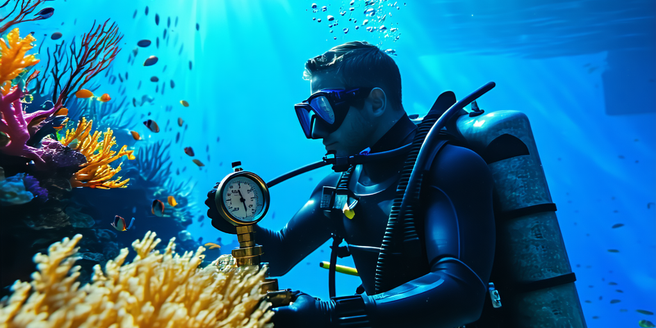
Understanding Barometric Pressure in Diving Contexts
Barometric pressure significantly influences the diving experience. It is the weight exerted by the atmosphere, which changes with altitude and weather patterns. For divers, understanding these fluctuations is vital for dive safety and efficiency. When pressure increases underwater, it can lead to greater gas absorption in bodily tissues, potentially causing decompression sickness if not managed properly. Divers must be aware of local weather changes that might alter barometric pressure. Such knowledge allows divers to adjust dive plans to prevent potential risks associated with rapid changes in pressure. By studying the nuances of barometric pressure, divers can enhance their preparedness and ensure a more secure and enjoyable diving experience. Understanding this atmospheric variable is foundational for dive planning and execution.
The Science Behind Pressure and Its Effects on the Body
Pressure affects the human body significantly, especially when diving. At sea level, the body is accustomed to approximately one atmosphere of pressure. However, as divers descend, the pressure increases, compressing air spaces in the body. This higher pressure affects gas absorption, notably nitrogen, which becomes a concern due to potential nitrogen narcosis and decompression sickness. These conditions arise because gases behave differently under pressure, leading to elevated risks if ascents are too rapid. Divers must be aware of these effects to manage their dives effectively, utilizing gradual ascent strategies and safety stops. Understanding the relationship between pressure and bodily function is crucial, ensuring divers can mitigate adverse effects while enjoying underwater exploration. Adhering to this knowledge, divers can enhance safety and overall dive satisfaction.
How Barometric Pressure Influences Dive Planning
Dive planning requires a keen understanding of barometric pressure, as it influences gas absorption, buoyancy, and overall dive safety. Changes in barometric pressure can affect decompression models, requiring divers to adjust their dive profiles accordingly. Accurate weather and pressure forecasts help divers plan the timing and depth of their dives to minimize risks associated with swift pressure changes. Furthermore, understanding barometric pressure aids in selecting safe ascent procedures, preventing potential dive-related injuries. Planning with barometric variables in mind ensures that divers can maintain optimal breathing gas usage and buoyancy control, leading to safer and more efficient dives. The goal is to prevent incidents like decompression sickness by aligning dive plans with atmospheric conditions, thus allowing divers to enjoy their underwater sessions while minimizing risks.
Recognizing Symptoms of Pressure-related Issues
Pressure-related issues like decompression sickness and nitrogen narcosis can have serious consequences if symptoms are not recognized early. Divers must be vigilant in identifying signs such as joint pain, dizziness, or confusion, which may indicate pressure-related stress. Decompression sickness, often referred to as ‘the bends,’ results from rapid ascents leading to nitrogen gas forming bubbles in the bloodstream. Knowing the symptoms allows for immediate response, such as emergency ascent procedures or seeking medical attention. Training in recognizing these symptoms is crucial, as it provides divers with the knowledge to react promptly, reducing potential harm. Awareness and swift response to pressure-related indications can drastically improve outcomes for divers, ensuring their safety and well-being during and after the dive.
Tips for Managing Barometric Pressure Changes
Managing barometric pressure changes effectively is key to a safe and enjoyable dive. Divers should always check local weather conditions and forecasts to anticipate pressure variations. Pre-dive planning should include adjustments for any significant atmospheric shifts. Utilizing dive computers that provide real-time pressure data aids in monitoring and managing these changes. Divers are also encouraged to employ a slow and controlled ascent technique to mitigate the risks associated with pressure differences. Hydration and proper rest before diving can further aid the body in adapting to pressure changes. Employing these strategies helps ensure divers maintain optimal safety and comfort, allowing for dives that are not only safe but also memorable.
Advanced Techniques for Diving in Variable Pressures
Diving in areas with variable pressures requires advanced techniques and greater preparation. Seasonal weather changes, altitudinal diving, and remote areas all present unique challenges. Divers should be trained in analyzing pressure data, interpreting dive tables, and utilizing advanced dive computers that track environmental conditions. Techniques such as staged decompression, using gas blends like trimix or heliox, and ensuring proper thermal protection can greatly assist in managing different pressure conditions. Extended training in buoyancy control, enhanced navigation skills, and understanding of environmental indicators equip divers to handle variable pressures adeptly. These advanced skills, alongside a keen awareness of their surroundings, enable divers to explore new underwater territories while effectively managing potential risks associated with varying barometric conditions.
